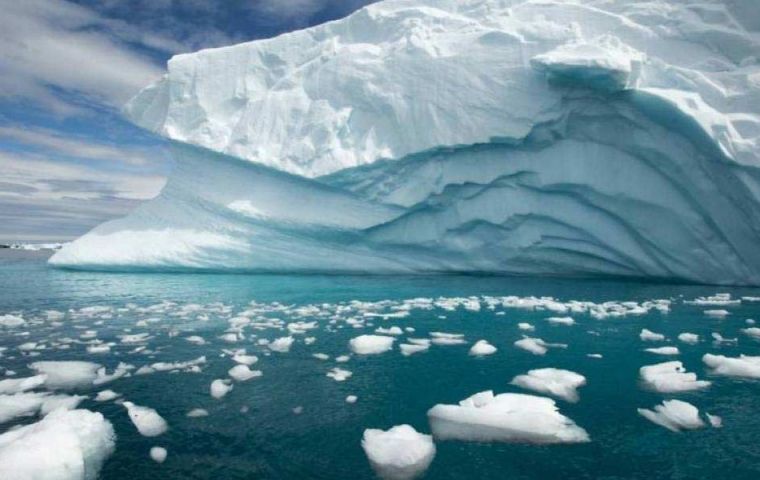MercoPress. South Atlantic News Agency
Antarctic ice reported to be at an all-time low
 It is not just barely a record low. Climate change is believed to have finally reached Antarctica, which, unlike the Arctic, had been relatively safe due to different geographical conditions
It is not just barely a record low. Climate change is believed to have finally reached Antarctica, which, unlike the Arctic, had been relatively safe due to different geographical conditions Antarctic sea ice was reported last Feb. 13 to consist of just 737,000 square miles (1.91 million square kilometers). These figures meant a significant drop from the 741,000 square miles (1.92 million square kilometers) recorded on Feb. 25 last year by the National Snow and Ice Data Center (NSIDC).
To make matters worse, NSIDC scientists stressed that these measurements were only preliminary, as more melting was still possible later this Summer. The definitive results will be released next month, the NSIDC also said.
Ice in Antarctica thaws despite the low temperatures because the thick shelves that support Antarctica's ice sheet are exposed to waves and warmer temperatures, although it has no discernible impact on sea level because the ice is already in the ocean, it was explained.
However, the ice sheet, a thick freshwater glacier that covers Antarctica, is the subject of special attention by scientists because it contains enough water to cause, if it melts, a catastrophic rise in ocean levels.
“Antarctica's response to climate change was different from that of the Arctic,” said Ted Scambos, a scientist at the Cooperative Institute for Research in Environmental Sciences (CIRES). The Cooperative Institute for Research in Environmental Sciences (CIRES) is a research institute that is sponsored jointly by the National Oceanic and Atmospheric Administration (NOAA) Office of Oceanic and Atmospheric Research (OAR) and the University of Colorado Boulder (CU).
“The downward trend in sea ice may be a sign that global warming is finally affecting the floating ice surrounding Antarctica, but we will have to wait several more years to be sure of this,” Scambos noted.
The Antarctic cycle undergoes significant annual variations and the continent did not experience the rapid melting of the past four decades, unlike the Arctic, where the rate of sea ice loss has followed a fairly consistent downward trajectory due to global warming, a phenomenon highly influenced by sea ice melt. When white sea ice is replaced by a dark, thawing sea, the water absorbs a similar percentage of the Sun's heat instead.
There are also suggestions that sea ice may be melting because of warmth trapped just below the surface of the ocean, Scambos said. “Basically, you’re getting heat stirred into the upper layer [of water] around the Antarctic,” he said. If that theory holds up and is linked to the general warming of the oceans, “then that has big implications for the stability of the Antarctic ice sheet.”
In this scenario, scientists wonder if it is “the beginning of the end” after Antarctic sea ice has reached record low levels for the second time in two years. The last two years mark the only time that sea ice levels have dipped below 2 million square kilometers since satellites began monitoring it in 1978. It is “not just ‘barely a record low,’” Scambos insisted. “It’s on a very steep downward trend.”
While the Arctic is surrounded by continents, Antarctica is a continent surrounded by the ocean, which means sea ice can grow outward, unconstrained. And Antarctic ice tends to be thinner, with greater highs in the winter and steeper declines in the summer.


Top Comments
Disclaimer & comment rulesCommenting for this story is now closed.
If you have a Facebook account, become a fan and comment on our Facebook Page!